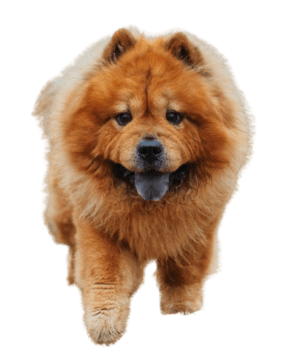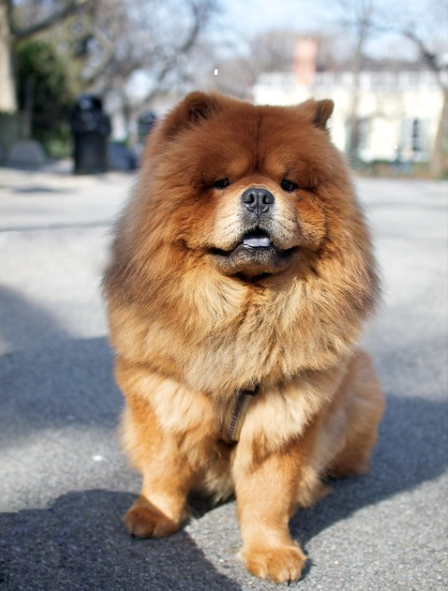

Origin:
China
Color:
Red (light gold to deep red-brown) Cinnamon (light tan to brown) Black Cream white or ivory
Average Weight:
- Male: 18-41 kgs
- Female: 16-39 kgs
Life Expectancy:
8-12 years
Average Height:
17-20 inches
Know More About Me

Description:
The Chow Chow breed is really famous in the Philippines. Lots of people love them! There are a few reasons why they’re so popular.
First, they look really cool! They’ve got this mane that makes them look like lions, and their tongue is blue-black, which is super unique. When people see them, they’re usually really impressed by how they look.
But it’s not just their appearance that makes them special. Chow Chows have a long history and are associated with Chinese royalty, so owning one is seen as a sign of being rich and important. People like to show off their status by having a Chow Chow as a pet.
Chow Chows are also known for being really loyal and protective. They make great guard dogs, which is important in a place where safety is a big deal. Even though they might seem fancy, they can adapt well to the hot weather in the Philippines as long as they’re taken care of properly.
You’ll also see Chow Chows a lot in movies and on TV. Their appearances in the media make them even more popular and loved by people. So, all in all, Chow Chows are famous in the Philippines because they look cool, have a rich history, are loyal and protective, can handle the hot weather, and are seen a lot in the media. They’re definitely a favorite among dog lovers in the country!

Feed Requirement:
Chow Chows need a good mix of food to stay healthy. They need protein to build muscles, fat for energy, and carbs for digestion. They also need vitamins and minerals to keep their coat thick and stay healthy. A normal adult Chow Chow usually needs about 2 to 2.5 cups of good dry dog food every day, split into two meals. But how much they need can change depending on how heavy they are, how old they are, how active they are, and how many calories the food has.

Best Food to Feed:
Chow Chows are seen as medium-sized dogs with thick fur, but recent research suggests they’re actually considered heavy for their size in terms of weight and height. This can lead to joint and bone issues like hip and elbow dysplasia. So, it’s important to feed them the right mix of food to prevent these problems as they grow. They need a diet that’s lower in fat but high in protein and calcium to support their growth properly. If they don’t get the right balance, they might experience growing pains or bone defects.
The best foods for Chow Chows include:
- Chicken Meat: Chicken breast is a good choice because it’s low in calories and provides the protein they need, especially if they’re on a diet or have a sensitive stomach.
- Fruits: Fruits like apples and bananas are high in fiber, which can help with constipation and keep their digestive system healthy.
- Vegetables: A variety of veggies like broccoli, potatoes, beans, and pumpkins are great because they’re rich in fiber and vitamins, which are important for a Chow Chow’s growth and nutrition.

Common Health Problems:
Chow Chows, with their distinctive appearance and loyal disposition, are beloved companions in many households. However, like all breeds, they are prone to certain health issues that owners should be aware of to ensure their well-being.
One common health problem that Chow Chows may experience is hip dysplasia. This condition occurs when the hip joint doesn’t develop properly, leading to pain, stiffness, and difficulty walking. It can be caused by genetic factors or environmental factors such as rapid growth or obesity.
Another prevalent issue is elbow dysplasia, which affects the elbow joint and can cause lameness and discomfort. Like hip dysplasia, it can be genetic or exacerbated by factors like over-exercise or improper nutrition during growth stages.
Entropion, a condition where the eyelid rolls inward, is also seen in Chow Chows. This can lead to irritation, corneal ulcers, and even vision loss if left untreated.
Hypothyroidism is another health concern for Chow Chows. This condition occurs when the thyroid gland doesn’t produce enough hormones, resulting in symptoms like weight gain, lethargy, and skin problems.
Patellar luxation, where the kneecap dislocates from its normal position, is another issue that can affect Chow Chows. It can cause pain, lameness, and difficulty walking, and may require surgical intervention to correct.
Additionally, Chow Chows are susceptible to gastric dilatation-volvulus (GDV), commonly known as bloat. This is a life-threatening condition where the stomach twists, trapping gas and food inside. It requires immediate veterinary attention to prevent serious complications.
Allergies are also a concern for Chow Chows, with symptoms such as skin irritation, itching, and ear infections being common. Identifying and avoiding triggers can help manage these allergies effectively.
In conclusion, while Chow Chows are cherished companions known for their loyalty and distinct appearance, they are susceptible to certain health problems like hip dysplasia, elbow dysplasia, entropion, hypothyroidism, patellar luxation, GDV, and allergies. Regular veterinary check-ups, proper nutrition, and attention to their environment can help mitigate these issues and ensure a happy and healthy life for these majestic dogs
- Agility 30%
- Temperament 40%
- Lifespan 80%
- Independence 80%
- Protection 40%


Celebrity Dog – Genghis Khan
Source:
https://www.lucypetproducts.com/blog/a-helpful-guide-to-the-best-food-for-chow-chows/
https://iheartdogs.com/how-much-do-you-feed-a-chow-chow/
https://chowchowcommunity.com/interesting-facts/top-10-fascinating-facts-about-chow-chow-dogs/
https://www.luverdog.com/2020/09/food-for-chow-chow.html
https://sea.mashable.com/news/1967/boo-the-precious-internet-famous-pomeranian-is-dead-at-age-12
Top 5 Fun Facts of Chow Chow
Fact #1: They Have Blue-Black Tongues
Fact #2: Their Names Are Not of Chinese Origin
Fact #3: The Chinese Used Them as Working Dogs.
Chows Chows has a set of 44 teeth.
Fact #5: Chows Chows can't swim
Do You Know?
One of the most famous Chow Chows is Genghis Khan, who gained international fame as the “World’s Strongest Dog” in the 1980s. Genghis Khan was known for his impressive size, strength, and gentle temperament, which captivated audiences worldwide. He appeared in numerous television shows, commercials, and public appearances, solidifying his status as an iconic Chow Chow. Genghis Khan’s popularity helped to elevate the breed’s profile and contributed to its enduring reputation as a beloved and admired canine companion.
